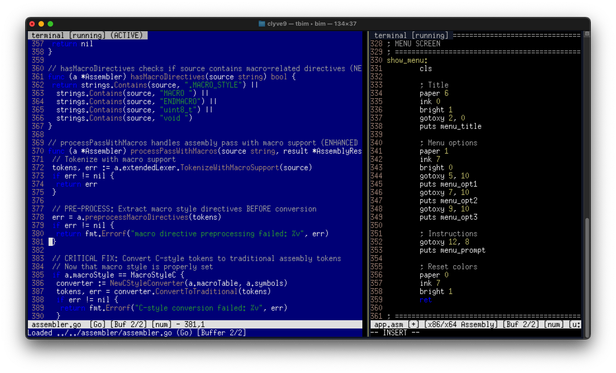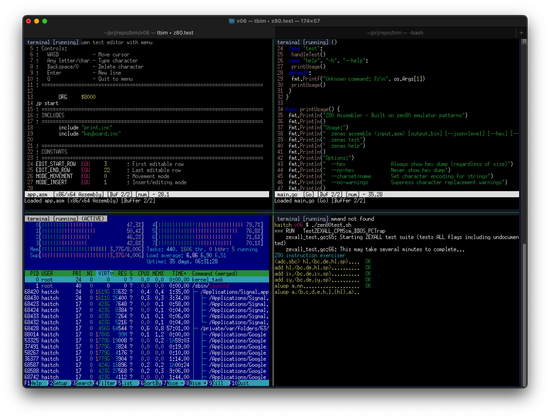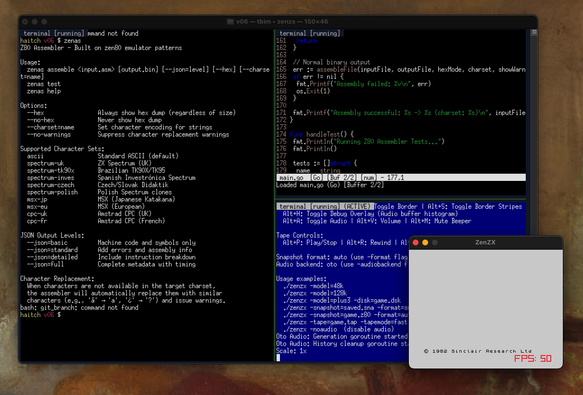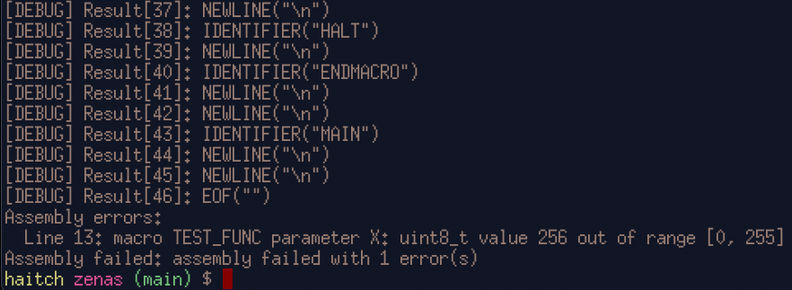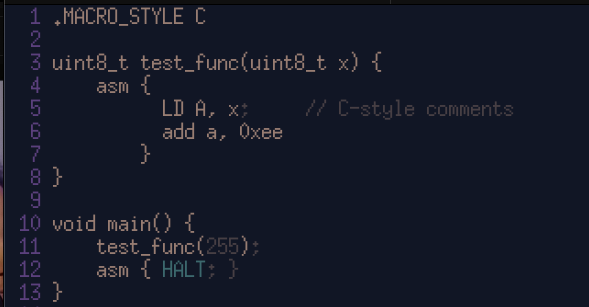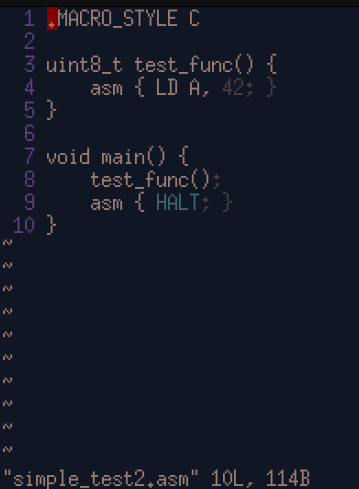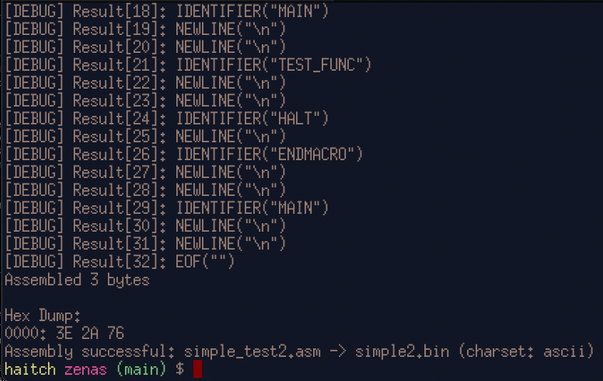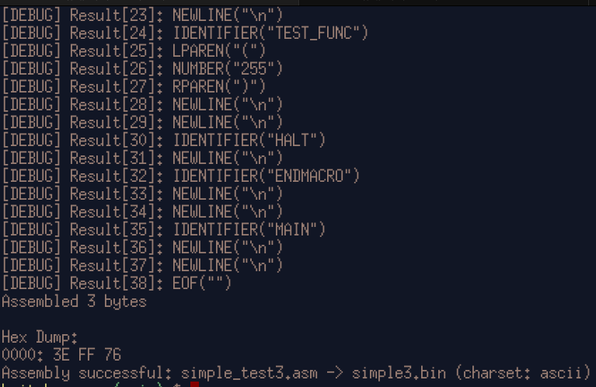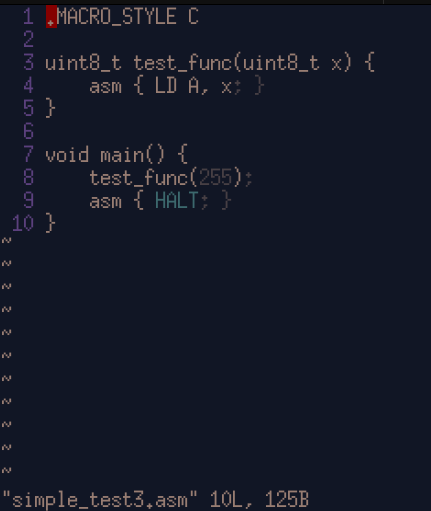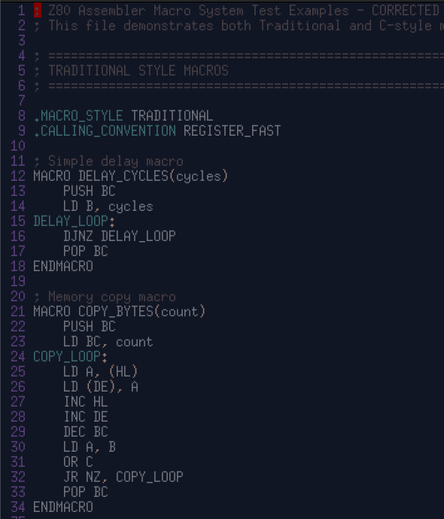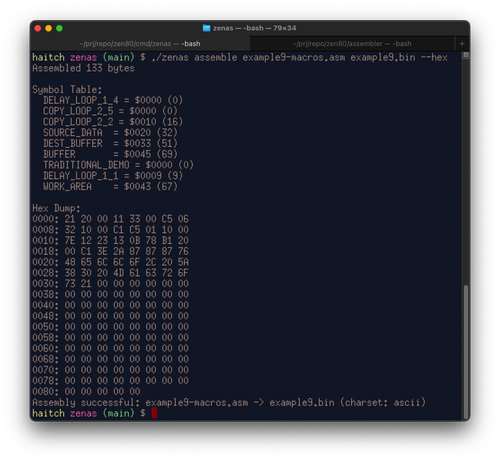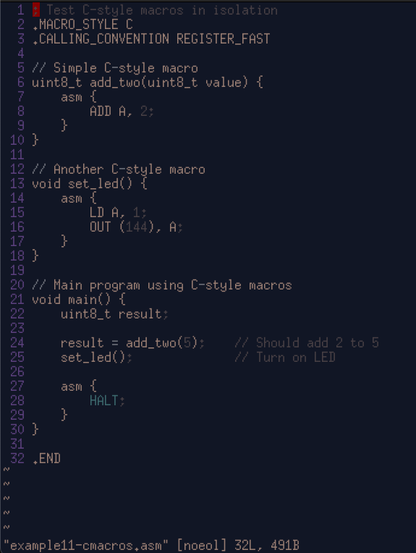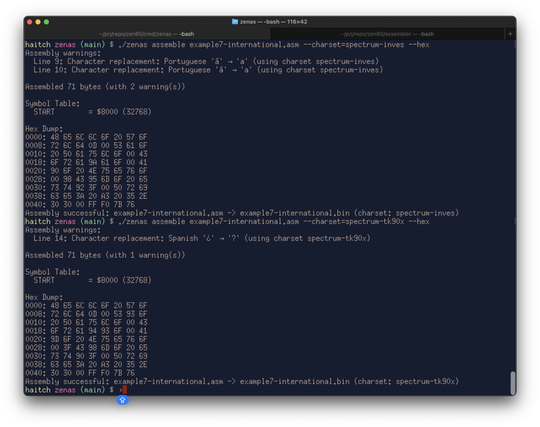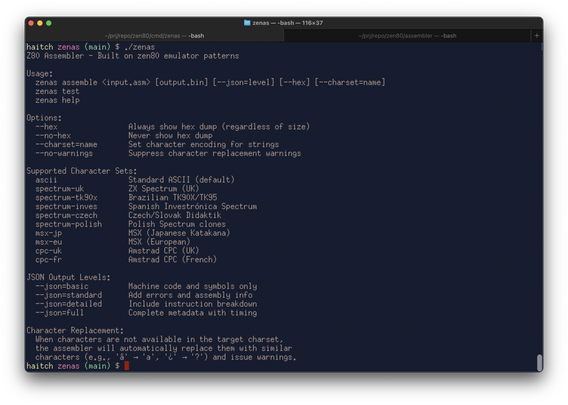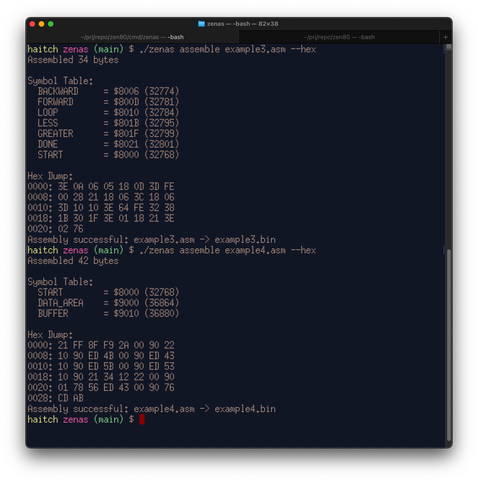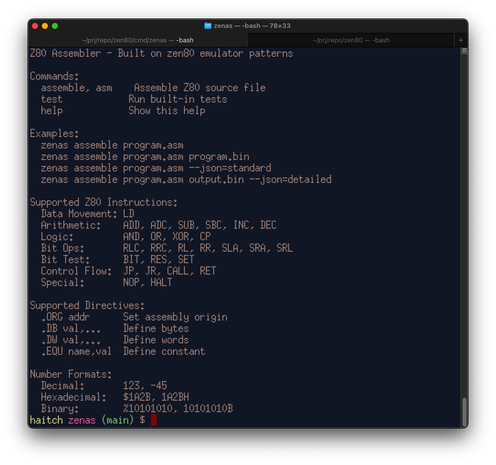Debugging my macros. The good thing is that after you have some well designed macros, most of the simple text user interface things behave almost like BASIC, or terminal printing in Pascal.
Also a good chance to dog food myself using the barely improved editor, and trying to make the zenas assembler work and assemble my non-trivial Z80-based text editor. Dog food is good food!
The only problem I found today was a regression in the vim-like command to jump to a line number. One other thing I noticed is that horizontal scroll doesn't work reliably when you have very long lines that extend beyond the right margin.
That being said, It's a little miracle I have never seen it crash, not a single time, during actual development work.
The best of news is that there are not many news on that front!
#bim #tbim #zenas #z80 #zen80 #zenzx #retrocomputing #ZXSpectrum #speccy #Spectrum
